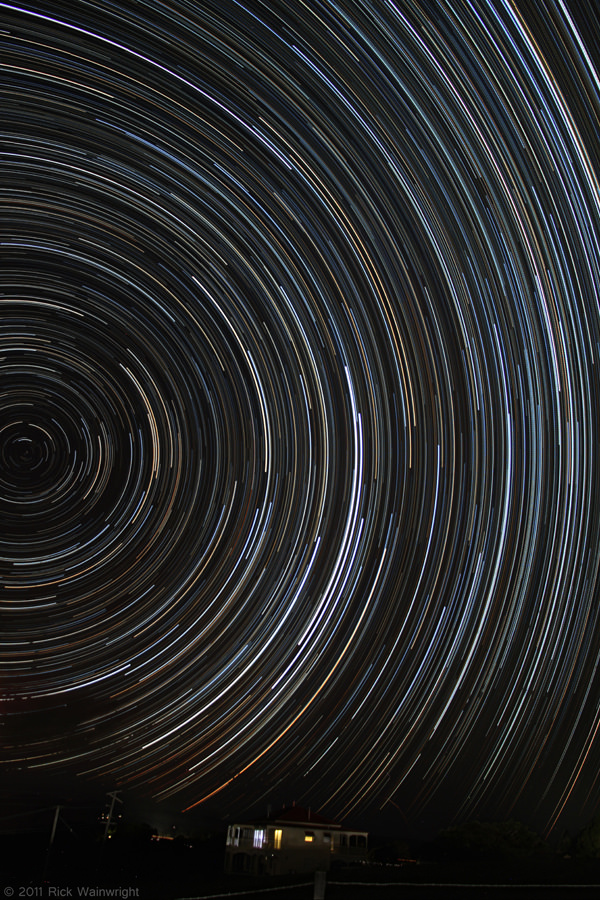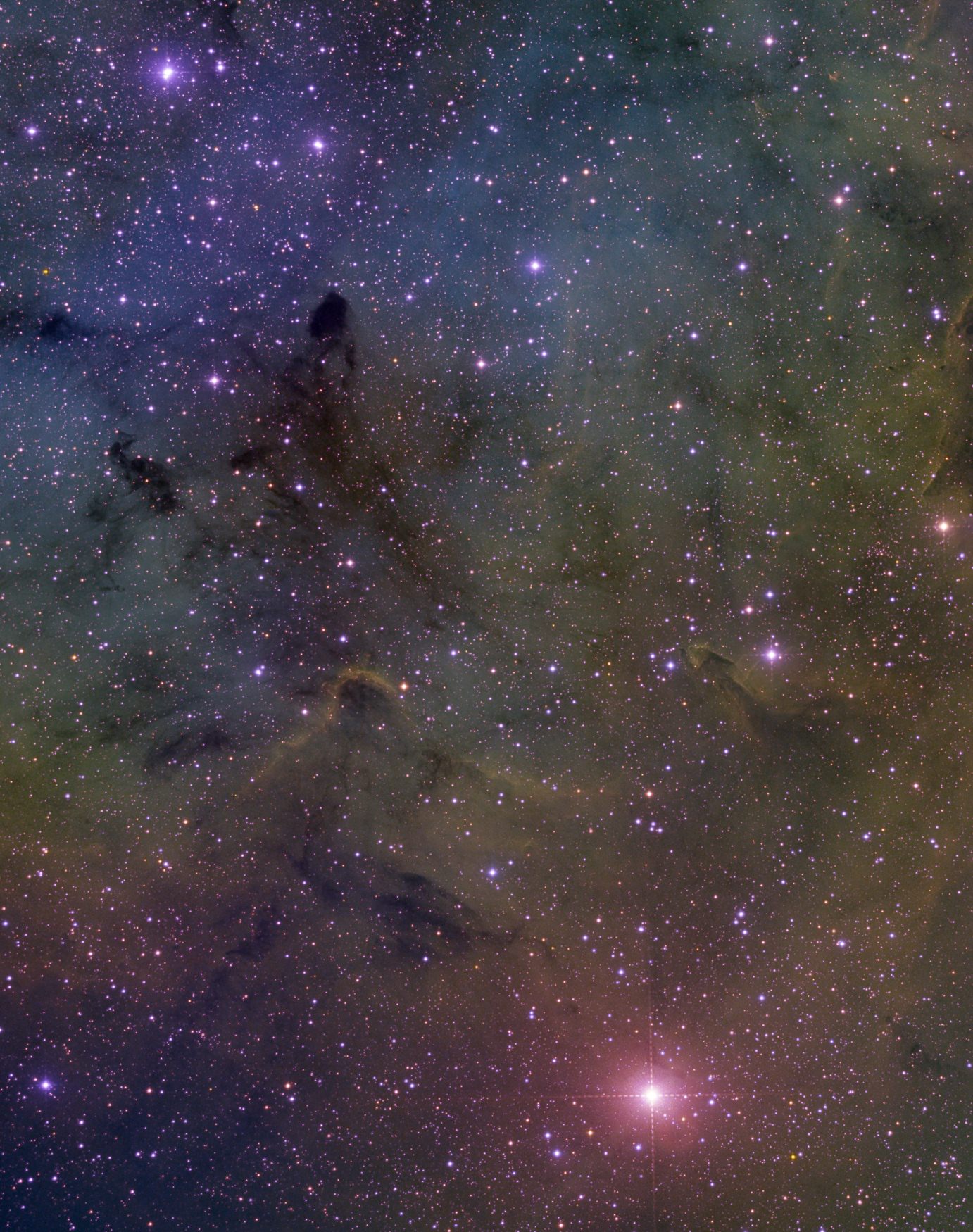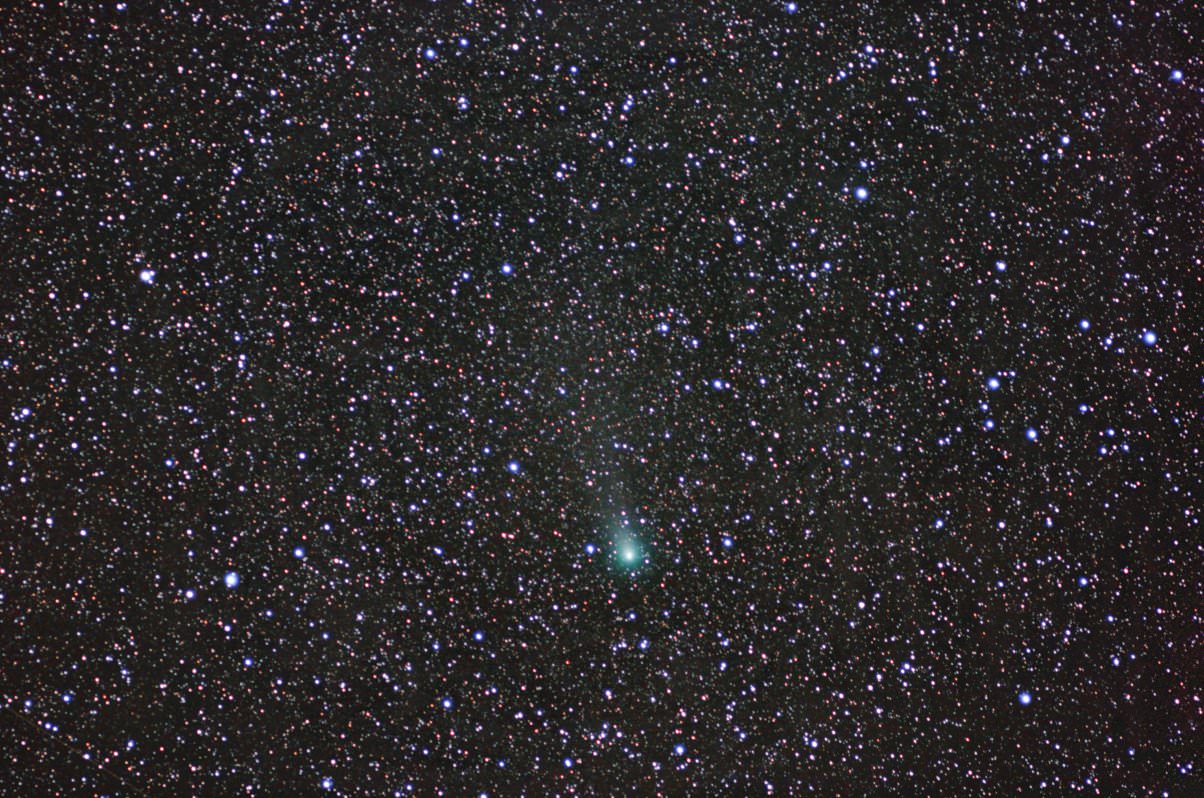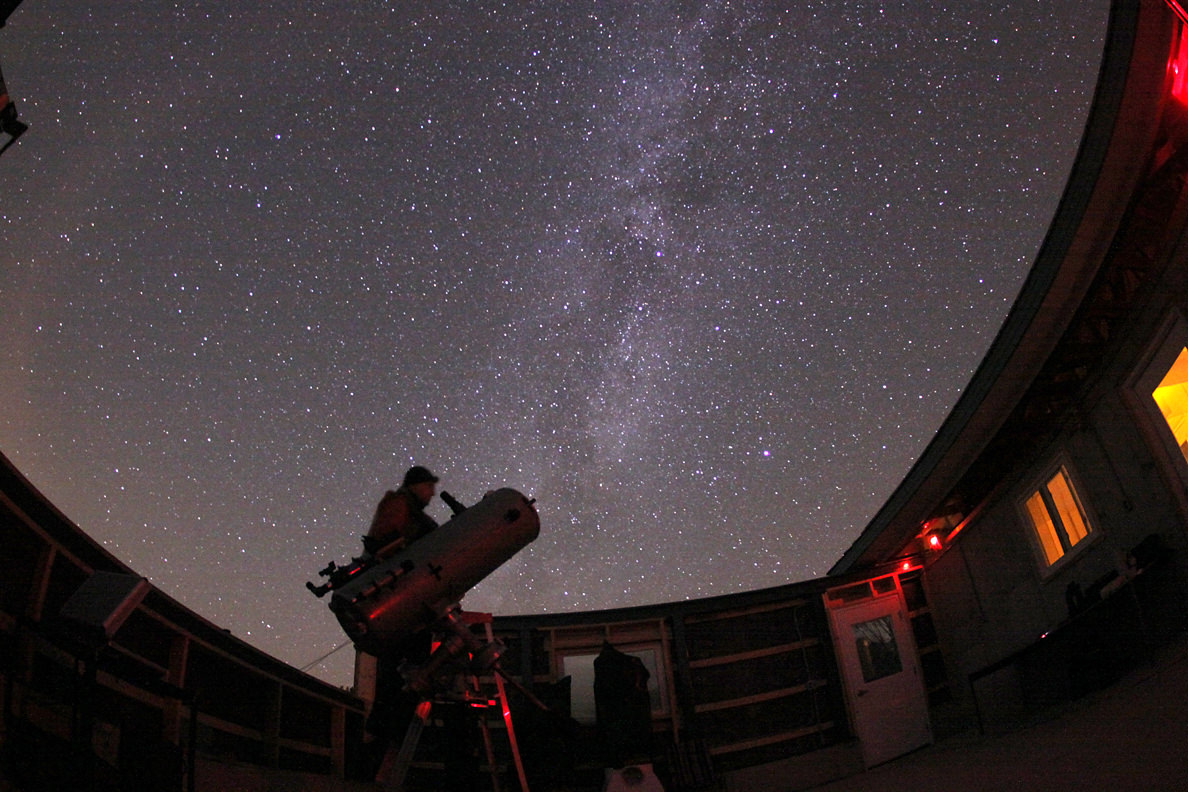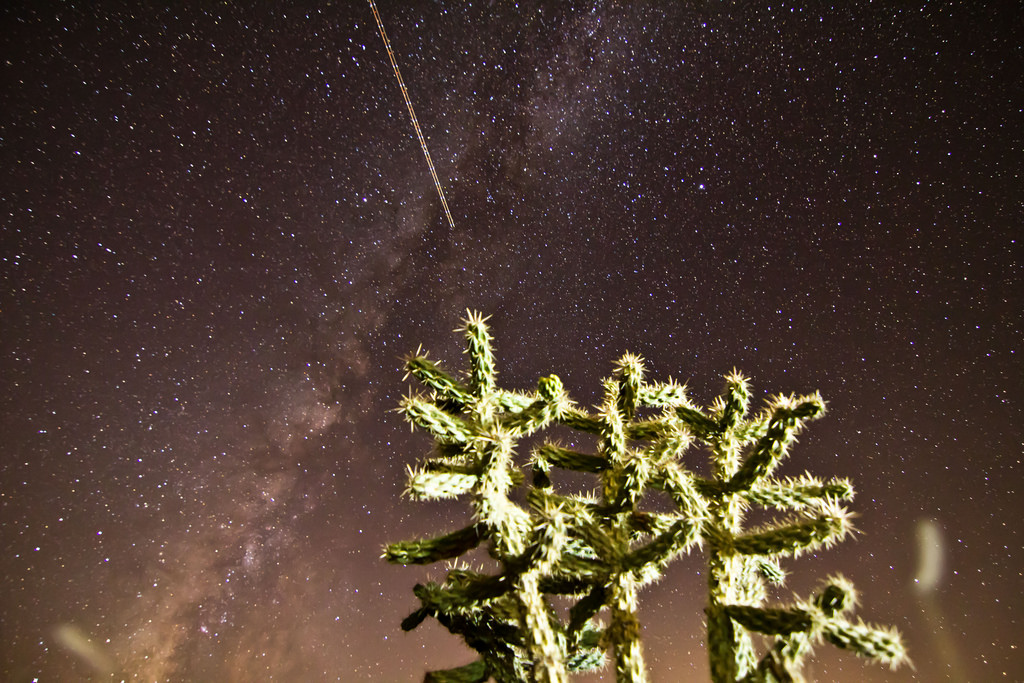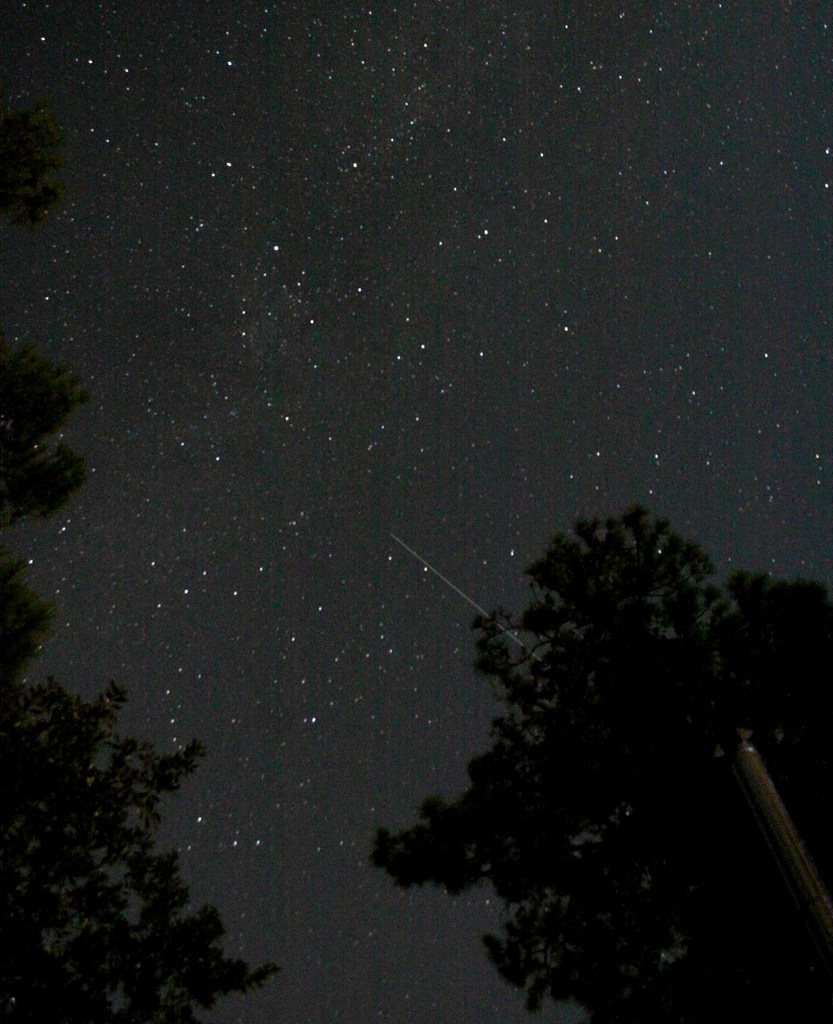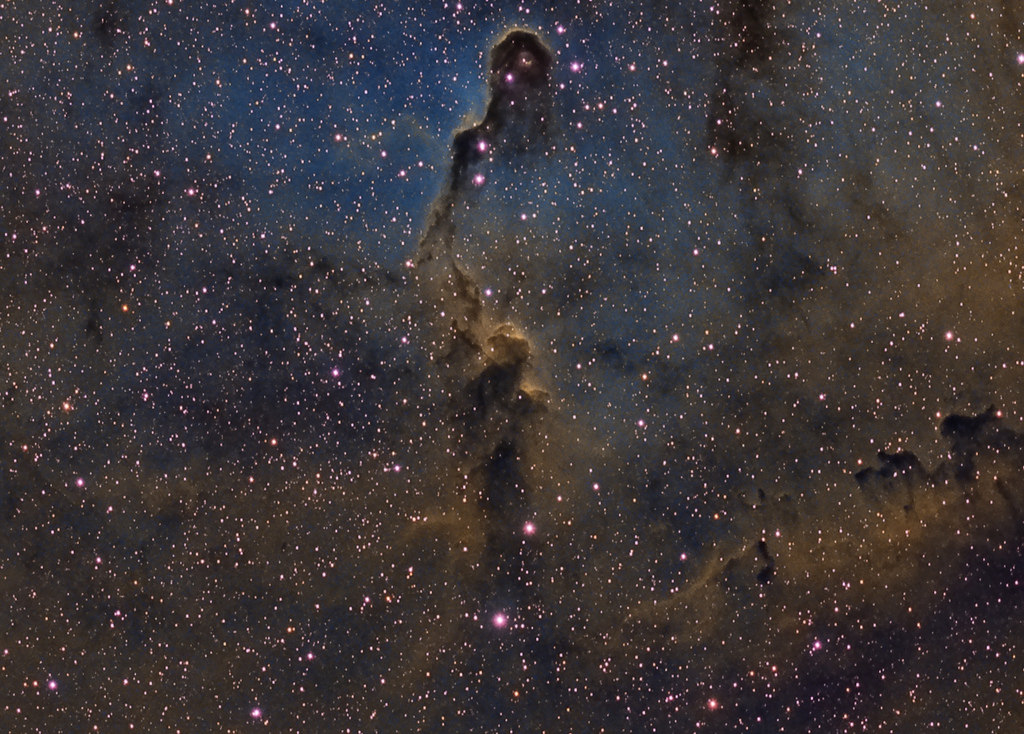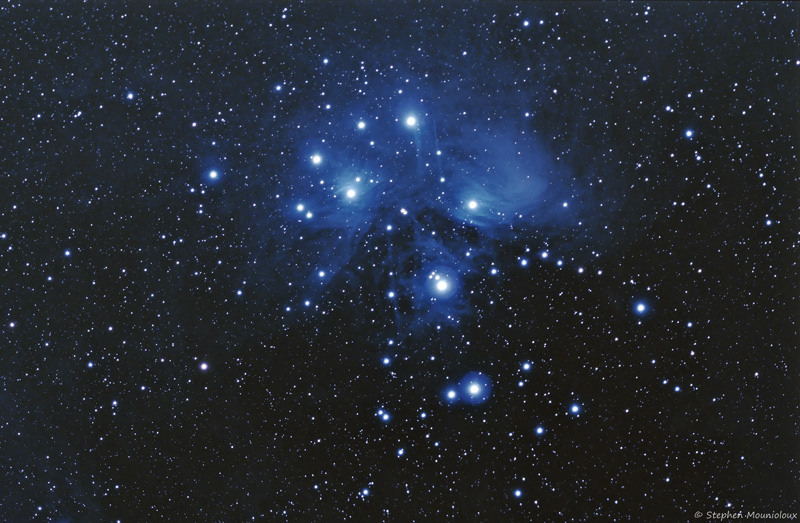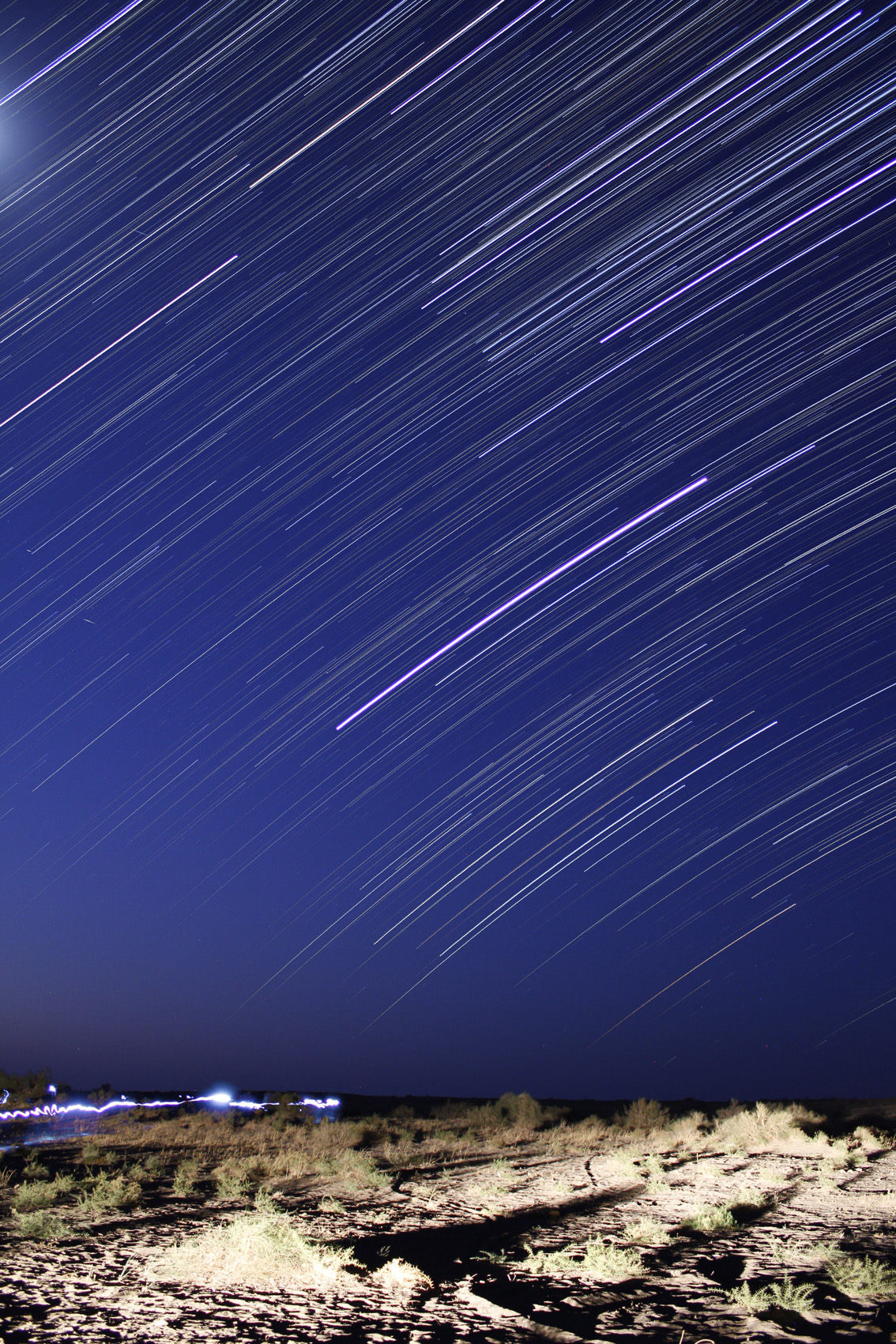[/caption]
This two-panel mosaic image of Mu Cephei in IC1396 was captured by Jan Inge Berentsen Anvik in Oslo, Norway during the spring/fall of 2011.
Mu Cephei is a red supergiant star located in the constellation Cepheus, at the top of the emission nebula IC 1396. The star is approximately 1,650 times larger than our Sun’s solar radius. Mu Cephei is also called Herschel’s Garnet Star because of its notable deep red color.
Here are some technical details about the image:
Palette: HST (SII-Ha-OIII)
Optics: Vixen R200SS 8″ f/4 MPCC
Camera: QSI 583wsg
Guider: DSI II via OAG
Mount: EM-200 Temma 2m
Exposures: Ha: 32h, OIII:12,5h, SII:28h, 30 minute subs +Darks, Flats
Total 72h 30min
Filters: Astrodon 5nm Ha, OIII, SII
For more photos, you may check out Jan’s Flickr page.
Want to get your astrophoto featured on Universe Today? Join our Flickr group, post in our Forum or send us your images by email (this means you’re giving us permission to post them). Please explain what’s in the picture, when you took it, the equipment you used, etc.

